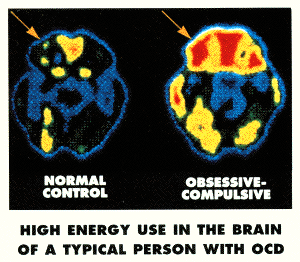Oppositional Defiant Disorder (ODD)
In children with Oppositional Defiant Disorder (ODD), there is an ongoing pattern of uncooperative, defiant, and hostile behavior toward authority figures that seriously interferes with the youngster’s day to day functioning. Symptoms of ODD may include:
- Frequent temper tantrums
- Excessive arguing with adults
- Often questioning rules
- Active defiance and refusal to comply with adult requests and rules
- Deliberate attempts to annoy or upset people
- Blaming others for his or her mistakes or misbehavior
- Often being touchy or easily annoyed by others
- Frequent anger and resentment
- Mean and hateful talking when upset
- Spiteful attitude and revenge seeking
Implications for Home and School
-Difficulty getting along with others
-Trouble complying with authority figures
-Easily annoyed by others
-Difficulty relaxing
-Engages in power struggles
What to do
According to the American Academy of Child and Adolescent Psychiatry; A child presenting with ODD symptoms should have a comprehensive evaluation. It is important to look for other disorders which may be present; such as, attention-deficit hyperactivity disorder (ADHD), learning disabilities, mood disorders (depression, bipolar disorder) and anxiety disorders. It may be difficult to improve the symptoms of ODD without treating the coexisting disorder. Some children with ODD may go on to develop conduct disorder.Treatment of ODD may include: Parent Management Training Programs to help parents and others manage the child’s behavior. Individual Psychotherapy to develop more effective anger management. Family Psychotherapy to improve communication and mutual understanding. Cognitive Problem-Solving Skills Training and Therapies to assist with problem solving and decrease negativity. Social Skills Training to increase flexibility and improve social skills and frustration tolerance with peers.
Medication may be helpful in controlling some of the more distressing symptoms of ODD as well as the symptoms related to coexistent conditions such as ADHD, anxiety and mood disorders.
A child with ODD can be very difficult for parents. These parents need support and understanding. Parents can help their child with ODD in the following ways:
- Always build on the positives, give the child praise and positive reinforcement when he shows flexibility or cooperation.
- Take a time-out or break if you are about to make the conflict with your child worse, not better. This is good modeling for your child. Support your child if he decides to take a time-out to prevent overreacting.
- Pick your battles. Since the child with ODD has trouble avoiding power struggles, prioritize the things you want your child to do. If you give your child a time-out in his room for misbehavior, don’t add time for arguing. Say “your time will start when you go to your room.”
- Set up reasonable, age appropriate limits with consequences that can be enforced consistently.
- Maintain interests other than your child with ODD, so that managing your child doesn’t take all your time and energy. Try to work with and obtain support from the other adults (teachers, coaches, and spouse) dealing with your child.
- Manage your own stress with healthy life choices such as exercise and relaxation. Use respite care and other breaks as needed
(Source: http://aacap.org/)
Online Resources
http://studentsfirstproject.org/wp-content/uploads/ODD-Quick-Fact-Sheet-for-parents-guardians-and-child-serving-professionals.pdf






